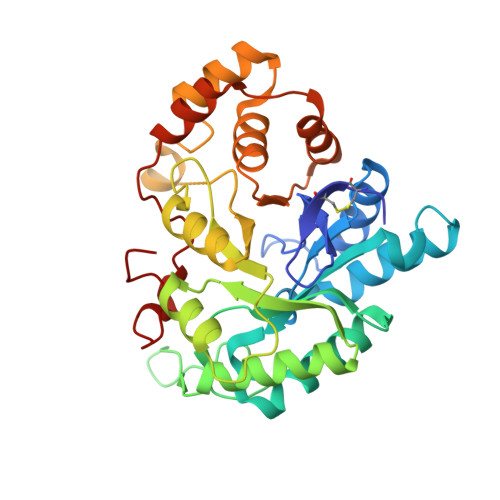Studies on a Tyr residue critical for the binding of coenzyme and substrate in mouse 3(17)alpha-hydroxysteroid dehydrogenase (AKR1C21): structure of the Y224D mutant enzyme
Dhagat, U., Endo, S., Mamiya, H., Hara, A., El-Kabbani, O.(2010) Acta Crystallogr D Biol Crystallogr 66: 198-204
- PubMed: 20124700
- DOI: https://doi.org/10.1107/S0907444909051464
- Primary Citation of Related Structures:
3FJN - PubMed Abstract:
Mouse 3(17)alpha-hydroxysteroid dehydrogenase (AKR1C21) is the only aldo-keto reductase that catalyzes the stereospecific reduction of 3- and 17-ketosteroids to the corresponding 3(17)alpha-hydroxysteroids. The Y224D mutation of AKR1C21 reduced the K(m) value for NADP(H) by up to 80-fold and completely reversed the 17alpha stereospecificity of the enzyme. The crystal structure of the Y224D mutant at 2.3 A resolution revealed that the mutation resulted in a change in the conformation of the flexible loop B, including the V-shaped groove, which is a unique feature of the active-site architecture of wild-type AKR1C21 and is formed by the side chains of Tyr224 and Trp227. Furthermore, mutations (Y224F and Q222N) of residues involved in forming the safety belt for binding of the coenzyme showed similar alterations in kinetic constants for 3alpha-hydroxy/3-ketosteroids and 17-hydroxy/ketosteroids compared with the wild type.
Organizational Affiliation:
Medicinal Chemistry and Drug Action, Monash Institute of Pharmaceutical Sciences, Monash University, Parkville, Victoria 3052, Australia.















